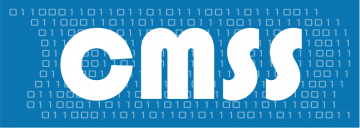The publishing process describes how manuscripts are handled from submission to publication.
1) The author submits a manuscript. The journal has no article processing charges and no article submission charges.
2) Each article undergoes a preliminary pre-screening process by the journal’s editor to assess suitability for the journal. The editor can reject the article without peer review if the paper is not suitable for publication in CMSS due to various reasons: the content of the article is not within the scope of the journal, duplication or large overlap with existing work or apparent plagiarism, the results are not novel or significant enough and lead to only an incremental advance in field, etc.
3) If the manuscript has passed the preliminary pre-screening process, the Editor will select at least two reviewers and ask them to evaluate the paper. CMSS uses a double blind review process.
4) After receiving the review forms from the reviewers, the Editor will decide to:
– publish the article in the current form when at least two reviewers are in agreement. The paper will be moved to the final editing stage for online publication;
– return the article to the author(s) for revision according to the reviewers’ comments. The author should include with his(her) resubmitted version a cover letter that includes a point-by-point response to the reviewers’ and editors’ comments, including an explanation of how he/she has altered his/her manuscript in response to these comments;
– reject the article when at least two reviewers are in agreement. No revisions will be requested for further consideration. The paper may not be resubmitted;
The final responsibility for the selection and acceptance of articles rests with the Editor.
The articles selected for publication will undergo the following:
5) Copy Editing and Typesetting
Copy editing seeks to ensure that an article conforms to the CMSS style, that all of the referencing and labeling is correct, and that there are no spelling or grammatical errors. Typesetting deals with the appearance of the article — layouts, fonts, headings etc.
6) Proof Reading
The typeset first proofs are sent to the author electronically as a PDF. Corrections to the proofs should be minor – authors should not rewrite or make substantial additions.
